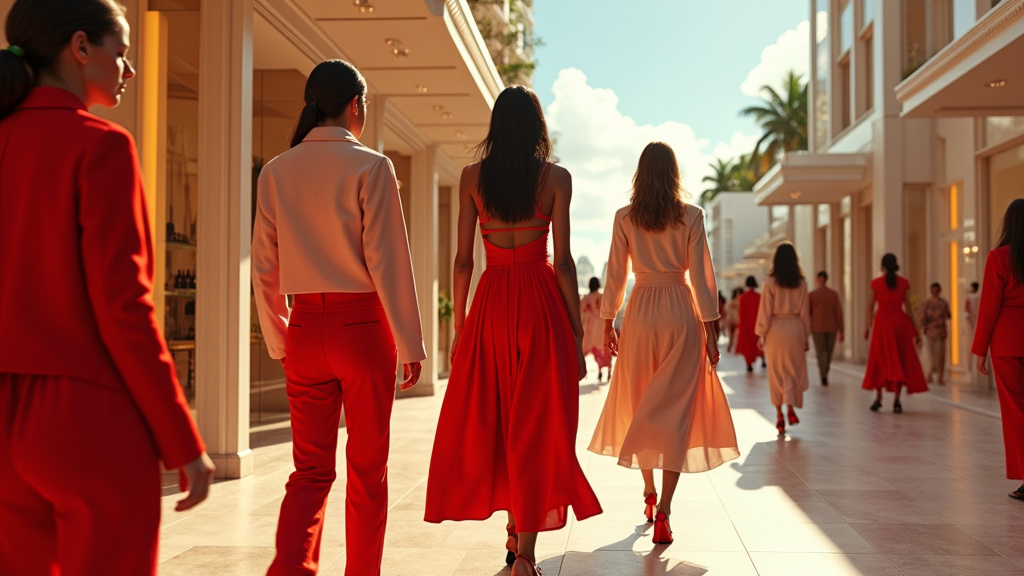The global fashion stage is witnessing dynamic **fashion industry trends**, marked by significant shifts in creative direction at major luxury houses and a new metric solidifying brand influence. Gucci has officially topped the inaugural Cultural Currency Index (CCI), underscoring a powerful connection between cultural engagement and market momentum, while a series of high-profile **designer appointments** signal a fresh chapter for iconic brands. Understanding these **fashion industry trends** is crucial for anyone invested in the sector.
A Season of **Designer Appointments** and New Beginnings
The industry has experienced a wave of creative leadership changes, with designers moving between prestigious houses. Maria Grazia Chiuri, after a successful nearly decade-long tenure at Dior, has returned to Fendi as its Chief Creative Officer. This homecoming signifies a new era for the Italian maison, with her first collection expected during Milan Fashion Week in February 2026. Chiuri’s departure from Dior paved the way for Jonathan Anderson, who has taken on the unprecedented role of sole Creative Director for Dior, overseeing womenswear, menswear, and haute couture. This consolidation of creative vision under one designer, a move not seen since Christian Dior himself, highlights Anderson’s significant influence in the **fashion industry analysis**. His appointment follows an acclaimed 11-year period at Loewe, where he successfully revitalized the brand.
In another landmark appointment, Grace Wales Bonner has been named the new Creative Director of Hermès’ men’s ready-to-wear, succeeding Véronique Nichanian after her 37-year tenure. Bonner, celebrated for her distinctive approach that merges British tailoring with cultural narratives, will present her debut collection in January 2027, becoming the first Black woman to lead design at a major European fashion house. This represents a significant shift in **fashion industry trends**.
Matthieu Blazy, previously lauded for his work at Bottega Veneta, has made his highly anticipated debut as the new Artistic Director of Chanel. His first collection, presented on October 6, 2025, during Paris Fashion Week, was a masterclass in texture and innovation, reinterpreting the brand’s iconic codes with a contemporary sensibility. Blazy’s appointment marks a significant transition for Chanel, ushering in a new creative direction following the legacies of Coco Chanel, Karl Lagerfeld, and Virginie Viard, demonstrating key **fashion industry trends**.
Gucci Leads the Cultural Currency Index: A New Metric for **Fashion Industry Trends**
Gucci has claimed the top spot in the inaugural Cultural Currency Index (CCI), a new benchmark created by Annex in collaboration with WeArisma. This data-driven model quantifies how cultural engagement translates into measurable market momentum by analyzing social media, search activity, and website traffic. **Gucci cultural currency** is clearly a powerful driver. Gucci’s leading position was attributed to its highly engaging cinematic activations, which generated significant buzz and demonstrated a strong link between cultural resonance and commercial success. The index also saw Fendi and Bottega Veneta rank highly, highlighting the potent cultural influence of these Italian luxury brands and informing **fashion industry analysis**.
Financial Pulse of the Fashion Industry: Key **Fashion Industry Trends**
Financially, the industry continues to navigate a complex global landscape. Deckers Brands reported a 9.1% increase in net sales for its fiscal second quarter of 2026, reaching $1.43 billion, primarily fueled by strong performances from its Hoka and Ugg brands. However, the company’s full-year forecast did not meet analyst expectations. These financial **fashion industry trends** are closely watched.
Ermenegildo Zegna announced a 3.6% organic growth in Q3 2025 revenues, reaching €398 million, with its Direct-to-Consumer (DTC) channel showing significant acceleration with a 9% increase. This growth was evident across its Zegna, Thom Browne, and Tom Ford Fashion brands. Salvatoreagamo reported stable third-quarter revenues of €221 million, with growth in North America and Europe helping to offset a challenging luxury market in Asia, though year-to-date revenues showed a decline. The **luxury fashion finance** sector reveals complex **fashion industry trends**.
Emerging Collections and Notable Moments in **Fashion Industry Trends**
The fashion calendar also featured notable collection launches. SAGABOI unveiled its Spring/Summer 2026 collection, “Port of Call,” blending London’s spirit with a Caribbean pulse. Carlota Barrera presented its Spring/Summer 2026 collection at 080 Barcelona Fashion, exploring themes of gender fluidity and identity. Golden Goose celebrated its heritage by launching a special-edition True-Star sneaker that unites the spirits of Mexico and Italy, exclusively available on Farfetch. On the red carpet, Heidi Klum attended the InStyle Imagemaker Awards 2025 in a memorable Balmain gown, accompanied by her son Henry Samuel. These **new fashion collections** are part of the broader **fashion industry trends**.
These extensive shifts in creative leadership and the establishment of new metrics like the CCI underscore a fashion industry that is constantly evolving, driven by innovation, cultural relevance, and strategic business decisions, all part of the ongoing **fashion industry trends**.





